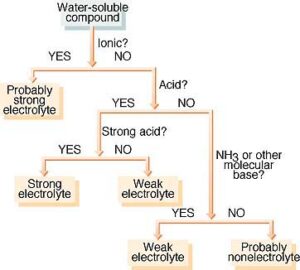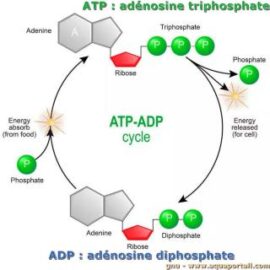Bank Reconciliations: Everything You Need to Know Bench Accounting
- 13 de março de 2023
- maranello

According to a recent study, 43% of companies surveyed used a fully manual or low level of automation account reconciliation, and another 46% had only partially automated this accounting subprocess. So, it’s easy to see why many companies resort to doing the bare minimum beyond bank reconciliations, often leaving other accounts, like inventory, intercompany and equity (among others) to languish. At the end of the process, the GL account balance may change using an adjusting journal entry. The internal control value of an account reconciliation is considered stronger when the second source of data comes from a third party, like a bank or credit card company. However, performing account reconciliations against internal sources, like subledgers or intercompany accounts, is still useful. Account reconciliation is particularly useful for explaining any differences between two financial records or account balances.

Once any differences have been identified and rectified, both internal and external records should be equal in order to demonstrate good financial health. The company should ensure that any money coming into the company is recorded in both the cash register and bank statement. If there are receipts recorded in the internal register and missing in the bank statement, add the transactions to the bank statement. Consequently, any transactions recorded in the bank statement and missing in the cash register should be added to the register.
What Is a Bank Reconciliation Statement, and How Is It Done?
We’ll take bookkeeping completely off your hands (and deal with the bank reconciliations too). One reason for this is that your bank may have service charges or bank fees for things like too many withdrawals or overdrafts. Or you could have written a NSF check (not sufficient funds) and recorded the amount normally in your books, without realizing there wasn’t insufficient balance and the check bounced. The balance recorded in your books (again, the cash account) and the balance in your bank account will rarely ever be exactly the same, even if you keep meticulous books.
- If you notice that an entry is missing, you can click on the create button to create a new deposit or payment entry to reconcile the account.
- Adjust the cash balances in the business account by adding interest or deducting monthly charges and overdraft fees.
- This process typically happens after the end of the month because banks send monthly statements at the end of the month that can be used as a basis for reconciliation.
- Reconciliation must be performed on a regular and continuous basis on all balance sheet accounts as a way of ensuring the integrity of financial records.
First and foremost, bank reconciliation matters because it helps you get a real view of your business’s finances. When you review your books, it’s important that what you’re reading reflects reality. Otherwise, you could end up spending cash you don’t own, or holding back from potential investments and financial growth. Frequent bank reconciliations confirm your accounts match up, which allows you to properly track your cash flow and as a result, make sensible financial decisions. Reconciliation ensures that accounting records are accurate, by detecting bookkeeping errors and fraudulent transactions.
What is bank reconciliation or catch-up?
For any kind of similar mistake that could be on the bank’s behalf, you have to get in touch with them to get the error resolved. The Ascent is a Motley Fool service that rates and reviews essential products for your everyday money matters. Not Sufficient Funds (NSF) refers to a situation when your bank does not honour your cheque. This is because the current account on which the cheque is drawn does not have sufficient funds to honour the cheque.
The entries in the entity’s books to rectify the discovered discrepancies (except for the outstanding cheques) would typically be made in a subsequent date or period, not backdated. When cheques become stale (ie., out of date), they would typically be reversed, not cancelled. Reconciliation serves an important purpose for businesses and individuals in preventing accounting errors and reducing the possibility of fraud. The rules vary depending on whether the thief used just your account number or your physical ATM or debit card. In the first instance, you aren’t responsible for any transactions you didn’t authorize as long as you report them within 60 calendar days after your statement was sent to you. Businesses are generally advised to reconcile their accounts at least monthly, but they can do so as often as they wish.
How to do a bank reconciliation
This is often done at the end of every month, weekly and even at the end of each day by businesses that have a large number of transactions. You receive a bank statement, typically at the end of each month, from the bank. The statement itemizes the cash and other deposits made into the checking account of the business. If you have access to online banking, you can download the bank statements in order to undertake the bank reconciliation process at regular intervals instead of manually entering the information.

Deposits in transit are amounts that are received and recorded by the business but are not yet recorded by the bank. In other words, the adjusted balance as per the bank must match with the adjusted balance as per the cash book. Bank reconciliation is undertaken in order to ensure that your balance as per the bank statement is correct.
Required Information to Create a Bank Reconciliation Statement
Therefore, you need to pass a journal entry in your books of accounts showcasing the increase in cash balance due to the interest or dividend earned. As mentioned above, the process of comparing your cash book details with the records of your business’ bank transactions as recorded by the bank is known as bank reconciliation. Reconciling your bank statement used to involve using a checkbook ledger or a pen and paper, but modern technology—apps and accounting software—has provided easier and faster ways to get the job done. Regardless of how you do it, reconciling your bank account can be a priceless tool in your personal finance arsenal. If you’re interested in automating the bank reconciliation process, be sure to check out some accounting software options. In this day of electronic banking, many people believe completing a bank reconciliation is no longer necessary.
Fraudulent activity can also happen if you’re in a partnership and share a joint account with your business partner. If, for example, they say they’ll withdraw money to pay for a business expense and take more than they journalize on the books, a bank reconciliation would instantly highlight that. When it comes to corporations and big companies, there’s usually an accounting department that’s already looking over numbers to make sure accounting reports match reality. In small business accounting, however, the responsibility usually falls upon the owner, who can either take on the job personally, outsource it to a bookkeeper, or automate it through accounting software. The easiest way to check for this is to print a check register for the month and compare it to the checks that have cleared the bank. Any checks that have been issued that haven’t cleared the bank must be accounted for under your bank balance column.
Step 3: Compare checks and adjust bank total
When an account is reconciled, the statement’s transactions should match the account holder’s records. For a checking account, it is important to factor in any outstanding checks or pending deposits. You should adp cobra number perform bank reconciliation at least every month—which is how often your bank sends a bank statement. A single 30-day period should give you a manageable number of transactions to compare between accounts.
Many people reconcile their checkbooks and credit card accounts periodically by comparing their written checks, debit card receipts, and credit card receipts with their bank and credit card statements. If you’re working for yourself, you (or your accountant or bookkeeper) will perform bank reconciliation. But if multiple people handle your business’s finances, the person reconciling the accounts should probably be different from the person signing the checks. For example, a restaurant or a busy retail store both process a lot of transactions and take in a lot of cash. They might reconcile on a daily basis to make sure everything matches and all cash receipts hit the bank account. On the other hand, a small online store—one that has days when there are no new transactions at all—could reconcile on a weekly or monthly basis.
- Bank statements are commonly routinely produced by the financial institution and used by account holders to perform their bank reconciliations.
- Companies generally perform balance sheet reconciliations each month, after the books are closed for the prior month.
- Exceptions are flagged for investigation, allowing staff to skip to step five in the reconciliation process, which calls for determining whether corrective action is required for each reconciling item.
- Keeping accurate records of your bank transactions can help you determine your financial health and avoid costly fees.
The differences may sometimes be acceptable due to the timing of payments and deposits, but any unexplained differences may point to potential theft or misuse of funds. Account reconciliation in business is similar to the familiar process of balancing a personal checkbook. These are called reconciling items, and they are added or subtracted to each balance to bring the bank statement and checkbook register into agreement, or balance. A bank fee is a common reconciling item that reduces a bank balance but usually isn’t reflected in the person’s checkbook register.
As a result of such direct payments made by the bank on your behalf, the balance as per the passbook would be less than the balance as per the cash book. The bank will debit your business account only when the bank pays these issued cheques. As mentioned above, bank overdraft is a condition where a bank account becomes negative as a result of excess withdrawals over deposits. All deposits and withdrawals posted to an account must be used to prepare a reconciliation statement. Any accounts that are active should be reconciled at month end, even if there are only a few transactions. Although bank reconciliation won’t stop fraud in its tracks, it can let you know whether it’s happened, as well as the when and where.
Gouverneur Bancorp Announces Fiscal 2023 Third Quarter and Nine Months Results – Yahoo Finance
Gouverneur Bancorp Announces Fiscal 2023 Third Quarter and Nine Months Results.
Posted: Wed, 02 Aug 2023 19:48:00 GMT [source]
Generally, neither balance is the correct amount of cash that should be reported on the company’s balance sheet. Let’s assume that a new company opens its first checking account on June 4 with a deposit of $10,000. During the month of June the company wrote five checks with a total of $5,000. It also made a $2,000 deposit in the bank’s night depository after banking hours on June 30.